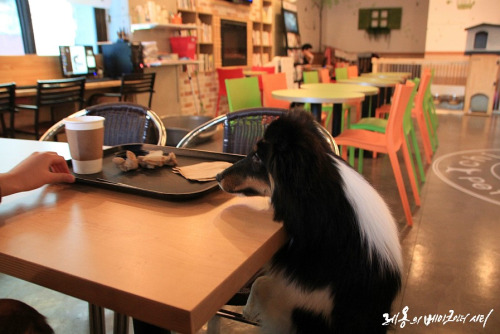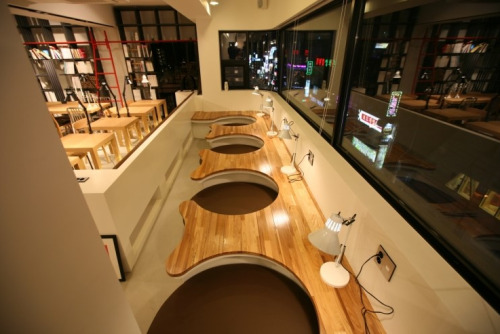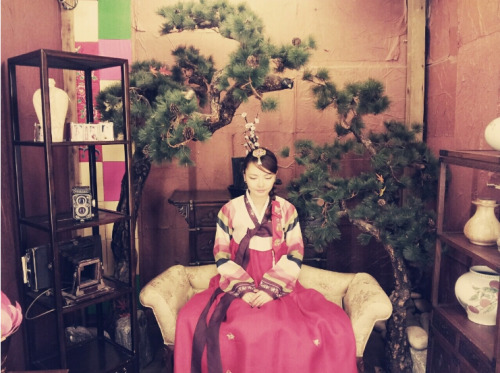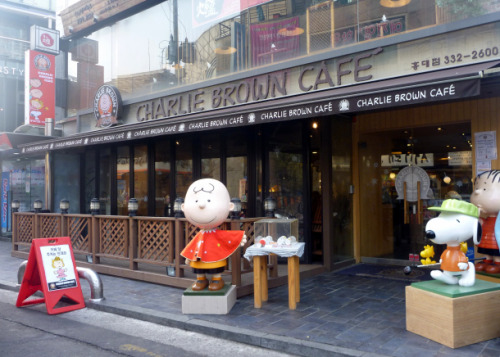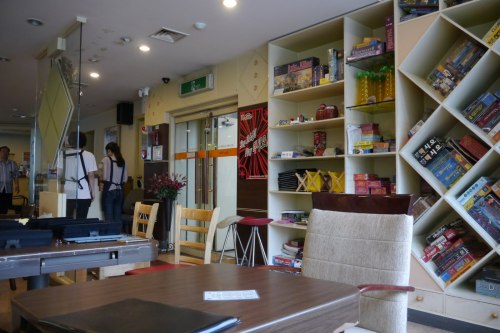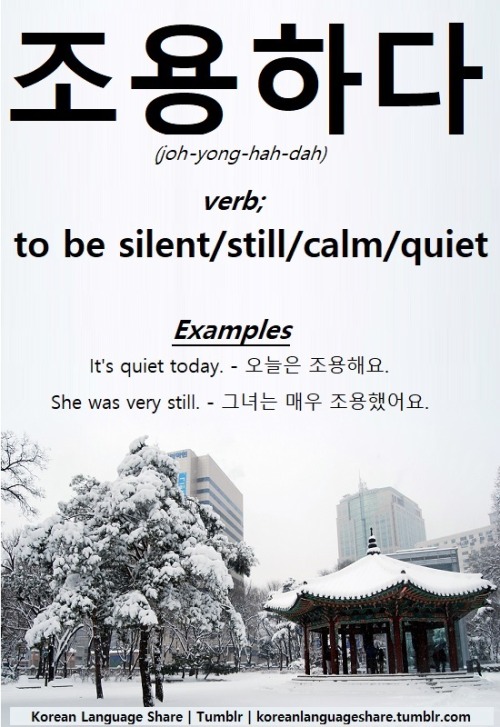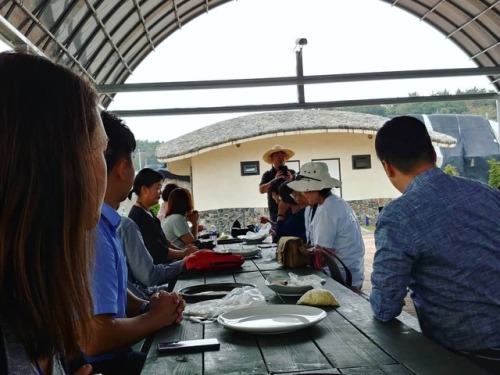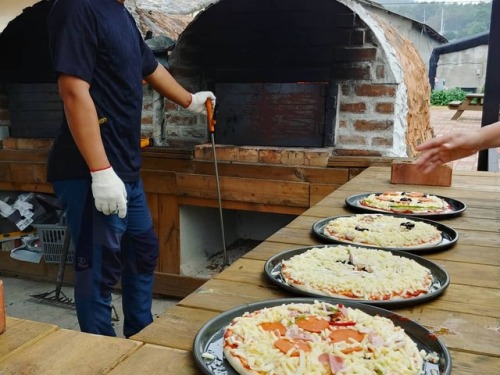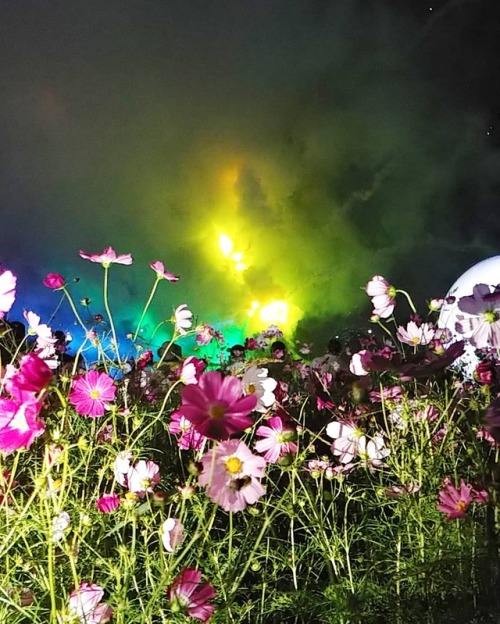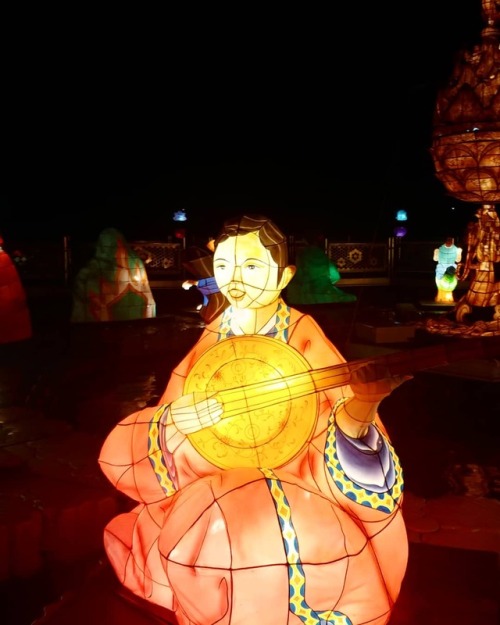#korean culture
Event Posts + Culture/History Posts Masterlist
<Event Posts>
[2019]
추석 송편 특집 (Chuseok Songpyeon special)
[2020]
March 1st movement day (3.1절 Samiljul)
Corona Virus-what’s going on + Vocab List
The April Revolution (4.19 혁명)
May 18th Democratization Movement (5.18)
Chobok(초복) First of the three dog days + Vocab List
Korean Independence Day 8.15 광복절
Halloween Post-Korean Ghosts and Monsters
<Korean Culture & History>
Culture: Korea’s flag, Taegeukgi
Art: Interview with a Korean Traditional Music Student
Learn Korean with K-dramas – Hotel Del Luna
History Traveling: Trip to Deoksugung palace
Korean Snacks – Choco Pie (초코파이)
Learn Korean with Songs- Twenty Three (스물셋, IU)
Korea’s hero, Admiral Yi Sun Sin (이순신 장군)
Korean Movie: Extreme Job (극한 직업)
Learn Korean with Songs-Butterfly(BTS)
Korean Movie-Dongju; The portrait of a Poet (동주)
Hanbok(한복) Korean Traditional Clothes
What’s on Korean Coins and Bills
Life as a Korean Student-Reading(Studying) room 독서실
A painter of the Joseon Dynasty, Shin Yun-Bok (신윤복) + Vocab
일월오봉도 (Ilwol Obongdo, painting only for the King)
Life as a Korean Student- Academic Grading system (9등급제)
Constellation and Korean Year counting method
Korean Traditional Poem, Sijo (시조)
Korean Traditional Beverages (한국의 전통 음료)
Korean Family Names (우리나라 성씨 소개)
Introducing Ramen in Korea (우리나라 라면 소개)
Hello everyone, this is admin Sung. Today, I’m going to introduce you popular apps related to studying.
1. Qanda 콴다

Qanda is a five-second-long app. If you have a problem you don’t know while solving the problem, turn on the Qanda app and take a picture. At this time, there is no sound when filming. This is quite useful when you are at quiet reading room or library. Then, within five seconds, similar types of questions can be drawn up so you can think of those. You can ask directly using ‘question mark’ if they are still not solved. One out of 11,000 teachers from prestigious universities is matched to solve the problem, and answers to the problem are given within three minutes. Questions are available 24 hours a day, and all subjects are available in elementary, middle, and high schools.
This is centrally a math-solving app using AI. When you study math, there might be a mathematical problem or a partial question which requires some explanation from a teacher. However, if it is late at night, or for students who do not go to academy, students would have trouble studying math efficiently. For those who need a math teacher at any time, this app helps them to be able to get mathematical explanation.

1) Take a picture 2) Read explanation 3) Get similar type of question
2. Yeol-pum-ta 열품타

The name of this app is actually abbreviation of 열정 품은 타이머, which means ‘passionate timer’ in Korean. This is a timer that measures study time, which is also useful for group studies. It is a study timer app that allows students to join several groups and compare study time with group members in the group. If you study alone, you sometimes might want to give up or take a break. But you can continue studying because you are motivated with this.
The most important feature is the timer function. You can measure study time with this function. You can see how much you studied for a week or a month at a glance. 0-4 hours, 4 to 7 hours, 7 to 10 hours, and more than 10 hours are marked in color. After a day’s use, study planners for the day are automatically created to reduce time waste. If you join a study group, you can share your study time with the members of the group. Many people say that this function motivates them not to give up. There is also a way to turn on the camera and study with an unspecified number of people on the app for smoother concentration. It’s also a mobile-optimized function.

Written by Admin Sung
Edited by Admin Yu
There are 3 kinds of ages in Korea
(Korean) Seneun-nai(세는나이), man-nai(만 나이), yeon-nai(연 나이)
Seneun-nai is broadly used in everyday life in Korea. In seneun-nai, you are 1 year old the day you are born and 1 year older with every year that passes.
Man-nai is the internationally used age system. You are 0 years old when born and age as years pass. It is the age system you(non-Korean) are familiar with.
Yeon-nai is used in Korean government offices. Yeon-nai is calculated by subtracting your year of birth from the current year. By law, men have to receive medical exam for the military at the yeon-nai of 19.
To make the concepts more clearer if you were born on July, 2002, and if it is March 2020, then
- Your Seneun-nai is 1+17=18
- Your Man-nai is 0+17=17
- Your Yeon-nai is 2020-2002=18
On September 2020,
- Your Seneun-nai is 1+18=19
- Your Man-nai is 0+18=18
- Your Yeon-nai is 2020-2002=18
Korea has been legally using man-nai since 1962 but seneun-nai is still used often in daily life.
Seneun-nai was an age counting method in East Asian culture including China, Korea and Japan.
Some say it is because there was no “zero(0)” in East Asian numerical system and some say it is because you were born the moment you were conceived in your mother’s womb. Japan stopped using seneun-nai in 1902 and so did China since the 70’s but Korea still uses the system despite movements by NGOs to use man-nai in the 70’s. .
The legal age is your man-nai in korea. Man comes from the Chinese character that means some date or time is full.
So be careful, if you say you are 19 years old, Koreans might think you are a high school third grade student.
Written by Admin Hyun
Edited by Admin Yu
Long time no see! This is Admin Hee. This time I’m going to tell you about special day in Korea.
Dongjinnal(동짓날) is the 22nd season of the 24th season, with the longest nights and shortest days of the year. Usually it is around December 21 or 22 in solar calendar when the sun is located at 270 degrees southbound of the equator. Also the cold starts to get stronger from this time.
The celebration was so important that it was recognized as the second most important day after Lunar New Year’s Day. This perception made such words like “You’ll get a year older if the winter solstice passes.” or “You have to eat red bean porridge to get one year older. Here we can see what we eat this day.

The picture you see right above is red bean porridge. Boil red beans to make porridge and put something like rice cakes made of glutinous rice and boil them together. Even though family members gathered and ate together, people had more diverse thoughts at that time. For example, they thought the red color of red beans drove away evil spirits. It was also effective in boosting immunity and overcoming the cold.
Like I said above, the celebration was so big this day. Let’s take a look how they celebrated in palace. They hosted a banquet called Hoeryeyon and appointed talented people by conducting the test ; civil service examination called gwageoje.
For ordinary people, they cooked red bean porridge not to get old and not to get sick. Also there was a custom in which daughters-in-low used to make Korean socks to their mother-in-law.
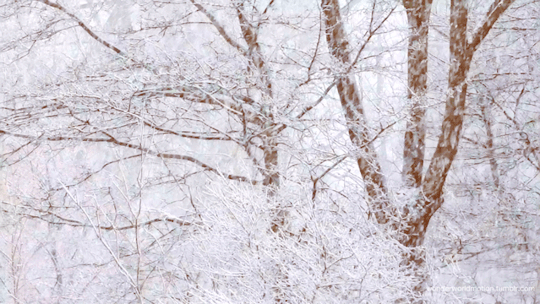
Written by Admin Hee
Edited by Admin Yu
Constellation was not decided from the beginning to be a well-known constellation today. What was used in each country and region was integrated into one to form what is today’s constellation.
The origin of today’s constellations is Western European constellations, which originated in the Semitic nomadic Chardians who lived in the Babylonian region around thousands BC. They started to build constellations after looking up at the night sky and connecting bright stars to animals while keeping livestock and moving along the blue vegetation. Twelve constellations, including sheep, bulls, twins, crabs, lions, virgins, scales, scorpions, goats, water turtles, and Pisces, along the ecliptic, which is the path through which the sun and planets pass, are recorded in the area’s landmark around B.C. 3000.
People assign constellations to the month and day of birth.
The following table shows it.

Chinese zodiac 12띠
Historical relics and records show the origin of twelve-year-old animals, which are different from folk tales. The Chinese zodiac signs were represented by imitating the shape of stars to observe natural cycles such as constellations and seasonal changes. The twelve signs of the Chinese zodiac are based on the state in which everything changes from spring to winter depending on the season. The twelve signs of the Chinese zodiac were widely used in the Yin Dynasty in China, and in the middle of the Han Dynasty, the twelve signs of the zodiac were connected in terms of time and defense.
We can write these as ‘the year of (the) ~’.
ex) 2015 was the year of sheep.

60Gapja 60갑자
Sixty-thousand characters refer to 60 ganji made by combining Cheongan and Jiwon. There are 60 from Gapja to Gyehae. This is why in Korea, we celebrate when one become 61 years old and 60 years old in Korean age.
The 60s are deeply related to ancient Babylonian Sumerian mathematics, which is recognized as the first civilization of mankind. Sixty characters are the number of 60 cases in which ten chapters and twelve chapters meet. Scholars estimate that the decimal system has the origin of ten fingers of a person, and the decimal system is a cycle of twelve months a year.

[참조 및 출처]
- 구글 이미지
- 네이버 블로그
- 네이버 지식백과
- 위키백과
-Written by Admin Sung
Hi! This is Admin Yu. Today’s post will be on the academic grading system of high schools in Korea. I’m a Korean high school student so this topic is something I’m very familiar with.
9등급제 (9-rank system)
9등급제(9-rank system) is the academic grading system of high schools in Korea. The 9-rank system is a relative evaluation system. Students are given ranks from 1(1등급, Rank 1) to 9(9등급, Rank 9) based on students’ relative standing among all others who took the same class that semester.
In one semester, students take two big exams, 중간고사(midterm exam) and 기말고사(final exam), and do 수행평가(performance evaluation) for the classes they are taking. At the end of the semester, the scores of the two exams and performance evaluations are added up for the final score out of 100. Then the ranks are given out based on this score.
Top 4% of students are given 1등급(Rank 1), the next 7% 2등급, the next 12% 3등급, the next 17% 4등급, the next 20% 5등급, the next 17% 6등급, the next 12% 7등급, the next 7% 8등급, the next 4% 9등급. For example, if there are 100 students who take chemistry, the top 4 students will get Rank 1, the next 7 will get Rank 2, and so on.

등급컷(컷 is ‘cut’) refers to the minimum score that can get the rank. For example, if the 1등급컷 for chemistry was 95, the students who got 95 or over get Rank 1, and if the 2등급컷 was 90, students who got score below 95 but over 90 get Rank 2. ‘등급’ is often omitted, so you can say 1등급컷 or just 1컷.
You can see many students asking the teacher for 1컷 after exam is over. Although the real ranks are given by the final score, the exams are often regarded as the most decisive factors. So knowing the 1컷 of the exam score can give you a rough idea of your current position among other peers. 등급컷 of the exam can also tell us about the difficulty of the exam. If the 1컷 is very low, the exam can be regarded as very difficult.
Since only a few can get high ranks, a single mistake can sometimes be critical. Especially if the exam was easy. In schools where education fever is high, if the exam was too easy and too many students got 100, one mistake can drop your rank drastically. And if the number of students who got 100 exceeds the number of students who can get Rank 1, the ranking may start from Rank 2 or even 3. So it’s important to find the balance of difficulty of exams. If the midterm exam was too easy, the final exam is expected to be very hard to meet the difficulty balance.
The same 9-rank system applies to 수능(Korean SAT) as well. Students are given ranks relatively like the 9-rank system in high schools. However, to differentiate the scores, other things like standard score/Z score are used to evaluate the student. For example, 100 and 92 may be the same Rank 1 but their standard score would be different.
I hope this post helped you understand the grading system of high schools in Korea!
-Written and edited by Admin Yu
Before I explain about 돌잔치(first birthday party), I will explain the difference between Korean age and foreign age. First, Korean age is calculated that baby will be one year old at the same time as the baby is born . This method was used in East Asian cultures a long time ago, but now only Korea uses it. Next, foreign age is calculated based on the date of birth. So unlike Korean babies who is one years old when they are born, foreign babies start at the age of 0. So after a years, foreign babies is one years old on their next birthday.
Now that I explained how to calculate Korean age, I will begin to explain about 돌잔치.돌잔치 is Korean custom to wish for the longevity of infants with a ceremony to celebrate their first birthday. In the past, many babies died less than a year because of the high infant mortality rate. So It is the origin of 돌잔치 to celebrate the baby’s first birthday and to wish the baby a long life. 돌 of 돌잔치 means spending 12 months. Also people can predict the future of a baby by 돌잡이. 돌잡이 is the custom of putting things in front of a child in front of many people and making him pick them up. In addition to the objects symbolizing occupations, many new kinds of objects are placed in front of children as modern occupations are diversified. Things have different meanings. Thread means you’ll live a long life. Rice means to be a blessed person. Money means to be a rich. Jujube means that many offspring thrive. Book means to be good at studying. Needle means to be a man of great dexterity.

Besides, there is an event that has similar meaning to 돌잔치. This origin is similar to the origin of 돌잔치. It is 백일잔치. 백일잔치 is an event to celebrate the 100th day of the baby’s birth. At this time , people give 수수팥떡 or 백설기( white rice cake ) to their neighbors. 수수팥떡 is rice cake with red bean paste on it. Its red color means it removes bad energy and keeps you healthy. 백설기 means clean energy. So people use them for their first birthday party or 백일잔치. The more I knew the meaning, the more interesting Korean customs were. How about you?
Photographic source
- -블로그 대구전통돌상 대구돌상 파티데이
- -현대돌잡이 [클레이돌잡이 / Yoonclay / 수공예 / 돌잡이용품] : Yoon Clay
- 네이버쇼핑
-Written by Admin Ju
-Edited by Admin Yu
Korean call Korean national anthem “애국가”
애국가 (Korean national anthem) means a song that loves the country. Korea doesn’t give 애국가 a special name and use as a national anthem. 애국가 is an official national song that symbolizes Korea and is also a song about loving the country.
애국가 began to be created when our country opened its doors to world powers and encountered new cultures. The period is the Gabo reform(갑오개혁)of 1894. The Gabo reform’s other name is Gao Jingzhang (갑오경장). The Gabo reform was a series of reform movements that were carried out form July 1894 to May 1896.
The lyrics of the national anthem, which is being sung today, were made to encourage our love for our country and our people’s sense of self-reliance as our country was in crisis due to foreign invasion.
After that, it was carried through the hands of various visionaries and contained the current contents. The tune attached to this song was “Auld Lang Syne” of Scottish folk song. 안익태(Ahn lk - tae), a Korean who active overseas at the time, felt sorry for singing a national anthem of another country on the national anthem. So He composed today’s national anthem in 1935.
The song has been sung at official government events since the establishment of the Korean government in 1948. And it was called nationwide as it was published in textbooks.

Written by Admin Ju
Edited by Admin Yu
photographic source
- 네이버 세상살이 엿보기
In the spirit of Halloween heres some different Korean ghouls, ghosts and spooks!

귀신 - Ghost/Spirt
귀신 dead people who are trapped on earth because of some kind of revenge, or unfinished business on earth.
- 처녀귀신 - Virgin Ghost - women with long black hair covering their face
- 물귀신 - Water Ghost - drags you into water so you share the same fate
- 달걀귀신 - Egg Ghost - face is like an egg, smooth and featureless

도깨비 - Goblin
도깨비 are nature deities or spirits possessing extraordinary powers, strength and abilities to interact with humans. They often play pranks on humans or punish them but there are different types from mischievous to dumb, so it can depend on the story sometimes. Also popularly depicted as the main character in the kdrama Goblin (쓸쓸하고 찬란하神 – 도깨비).

구미호 - Nine-Tailed Fox
구미호 is seen in korean, japanese and chinese mythology. A fox that lives a thousand years turns into a 구미호 giving it power to freely transform typically into a beautiful woman to seduce men and eat their liver or heart. 구미호 is very popular depicted in various media in, most popularily Naruto, the kdrama My Girlfriend Is a Nine-Tailed Fox, and the League of Legends character Ahri.

저승사자 - Korean Grim Reaper
저승사자 is always depicted in human form wearing a black hanbok and traditional Korean black hat. The job of a 저승사자 is to guide newly deceased souls to the afterlife not to kill or judge the deceased. They often appear before someones time of death and lingering outside places where lots of death has occurred.
Check out this beautiful site! Here in, you can find the flowerwhichcorresponds to your birthday according to Koreanculture.
Mine is;
September 11:Aloe (알로에) —Strong will to overcome difficulties ⋆.ೃ࿔*
╰─➛✎ᝰthat’s like me
ty for the tag @sabyss
mine is January 19: Pine 소나무 - Center of qi, longevity
no pressure tags:@katsoon@ghostbeam@gojobunny@mrskenmakozume@baalism and whoever else would like to!
Ty for the tag
Mine is November 25: Rhus Continus 개옻나무 - Insight, wisdomTagging anyone who wants 2 do this and taking note of y'alls bdays next <33
Absolutely nabbing the chance to see mine + save a ref for Korean flower names ✨
February 14 - Chamomile 카모마일 - Overcoming adversitytagging@eternallydaydreaming2015@sevensins-stuff@demonfamilytherapist@amistytown and everyone else who wants!!
Thanks for the tag!
April 2: Anemone/Wind Flower 아네모네 - ExpectationsI live these type of things. Tagging @kitsune-oji@into-the-devildom@property-of-diavolo and anyone else who wants to do this!
Thanks for the tag <3
May 9: Prunus 겹벚꽃 - Pure, elegant
don’t think i can in good faith claim to be pure or elegant but it’s a very pretty flower lol
tagging:@guesswhosbitchin @mimi-the-lucifer-stan@itsmeninerz
February 19: Oak 떡갈나무 - Friendly, sociable
In the internet yes, in irl? I’m practically a ghost
Tagging:@kitty-is-chilling,@sakurablossoms10,@twiceasfrustrating,@deadlaughter,@married-to-google-translater,@tsukikoayanosuke,@rosietrace,@jknerd,@poisonapplecakes1312,@slumberingprincess-blog,@naviavu,@spiderling-space,@luvielle,@danderechansworld,@nuitthegoddess,@nicoliaki and anyone else who wants to join
Thanks for the tag!!
September 20: Rosemary 로즈메리 - Think of meTagging:@kitty-is-chilling@akemiozawa@lovelyllamasblog@danderechansworld and anyone else
Thank you both @crazyyanderefangirlfanand@slumberingprincess-blog for the tags❤️
June 12: Mignonette 레제다 오도라타 - CharmI don’t know? Maybe
Tagging : @sakurablossoms10@lovelyllamasblog@beth-bethar00@nuitthegoddess@fumikomiyasaki@twsted-princess@ruki-nozaka
Thanks for the tag @slumberingprincess-blogand@kitty-is-chilling!
September 22: Quaking Grass 퀘이킹 그라스 - Excitement
I tag: ANYONE WHO WANTS TO DO THIS!!!!








♡ Like or Reblog
♡ Follow
If you save/use please!

이 블로그를 읽는 사람에게,
메모: 이 블로그는 최근의 게 아니다. 1월에는 이 블로그를 썼는데 여기에도 올리고 싶었다. 잘 읽어 봐줘라 ~~
안녕! 캐나다에서 온 금희주이다. 지난 일주일간 어떻게 지내냐?
난 우리 할머니의 댁에 기차를 타고 가서 새해를 함께 보냈다. 내 16번째 생일에, 할머니와 나는 함께 기차를 탔던 경험이 있다. 그 이후로 나는 기차 타는 걸 좋아하게 됐다. 18살 때 우리 할머니는 대학교에 다니는 나한테 소포를 자주 보내셨다. 그 이후로 우리는 펜팔을 했다. 할머니는 내 말을 항상 진심으로 들어주신다. 코로나 바이러스 때문에 2년이 지나도록 못 만났다. 난 우리 할머니가 너무 보고 싶었다. 내가 사랑하는 사람들 특히 우리 할머니가 코로나 바이러스와 같은 것들로 인해 아프실까 걱정된다. 요즘 여러분의 가족들은 잘 지내니?
처음에 우리 조부모님은 내가 한국어를 공부하는 게 이상하다고 생각하셨다. 조부모님은 나한테 “우리는 독일계 캐나다 사람인데 왜 한국어를 배우고 있니?”라고 물어보셨다. 그 질문은 나를 죽일 것이다.
난 조부모님께 내가 언제나 언어를 사랑한다고 말했다. 진실이다. 언어학이 내 전공이었다. 그렇지만 모든 언어를 통틀어 제일 생각나는 언어는 한국어였다.
9월에 (7개월 동안) 한국어 수업을 듣기 시작해서 나는 한국어 말하기와 듣기가 중급수준으로 빠르게 올랐다. 한국어 수업을 듣기 전에는 한국말로 못 할 것 같았다. 매일 한국어를 공부한다고 해도 한국어 실력을 향상시키지 못했다. 왜 그랬을까?
왜냐하면 한국 사람들과 한국어로 말하지 않았기 때문이다. 난 항상 내가 한국에 가기 위해서 한국어 공부를 열심히 해야 된다고 생각했지만 한국어를 사용하는 나라에 살지 않기 때문에 한국어를 배우기 어렵다. 16살때부터 한국어를 배우기 시작했는데 22살인 지금까지 왜 난 한국어로 편하게 말할 수 없을까?
한국 사람들과 한국어로 말한 이후로 한국어를 쉽고 편하게 배우기 시작했다. 100년 동안 한국어를 공부해 봤자 한국말로 대화하지 않으면 한국어를 배우는 외국인은 한국어가 유창하지 않을 것이다.
일주일 전에는 왜 한국어를 배우고 있는지 생각해보는 시간을 보냈다. 올해 한국에 가려고 하는데 한국에 영원히 살고 싶지는 않다. 캐나다는 좋지 않지만 나쁘지도 않다. 완벽하진 않다. 그렇지만 나는 한국 사람들이 캐나다를 사랑하는 이유를 알 것 같다. 캐나다는 많은 다른 나라에서 이민을 온 사람들로 이루어져 있다. 그래서 캐나다는 많은 나라의 문화가 섞여 있다. 또 우리는 특정한 종류의 문화가 있다. 이 문화는 한국과 조금 비슷하다.
난 어렸을 때 태권도 수업을 들어서 어린 나이에 한국에 대해 조금 알았다.
한국과 캐나다는 너무 좋은 관계를 가지고 있다. 나는 캐나다를 싫어하는 한국인을 한 명 밖에 못 봤다. 하지만 미국을 싫어하는 많은 한국인과 캐나다인을 많이 봤다. 캐나다에 많은 한국인이 살고 있기 때문에 한국의 문화가 캐나다를 영향을 미쳤다. 토론토에는 한인 타운 두 개 있다. 밴쿠버에서 한국인만 사는 한국 이웃집들이 많다. 그래서 캐나다가 한국인들이 친숙하다. 한국인이들은 다른 문화를 잘 받아들이는 캐나다를 좋아하는 데다가 캐나다 사람들의 친절한 성격을 좋아한다.
외국인은 한국에 쉽게 사랑에 빠진다. 한국인은 캐나다에 쉽게 사랑에 빠진다. 내가 아는 한국 오빠는 한국과 캐나다는 너무 다르다고 했다. 왜냐하면 한국에는 한 개의 문화가 있다고 했거든. 다른 나라에 태어난 한국인은 한국이 아니라고 하는 거 같다. 다른 나라에서 태어난 한국인도 그 나라 사람이 아니라는 것 같다. 그럼, 그 한국인들은 누구니?
오빠가 한 말에 동의하다. 대부분 캐나다에서 온 문화를 한국에서 온 것이랑 비슷하는데 많이 중요한 건 다르다. 캐나다의 문화는 물처럼 곧잘 변한다.
한국의 문화는 고정된 튼튼한 바위 같다. 계곡에서 물은 바위를 따라 흐르고, 바위는 물에 움직이지 않다. 하지만 물이 흐르면 바위가 매끄러워질 것이다. 어려운 문제 같다.
한국인들은 캐나다에서도 여전히 한국인의 정체성을 가지고 있기 때문에 한국인들이 캐나다를 매우 좋아한다.
읽어 줘서 고맙다.
희주 올림
Happy Black Day (Singles Day)!
There are three unofficial “love” holidays on the 14th of the last three months:
2/14 – Valentine’s Day – guys receive gifts
3/14 – White Day – girls receive gifts (Japan and Korea)
4/14 – Black Day – single people buy black-bean noodles to celebrate/cry about their single hood (Korea-only)블랙데이beullaek-dei – Black Day
짜장면jjajang-myeon – Korean-style (Chinese) black bean noodles
Cafes of Seoul
Seoul is home to a wide variety of cafes. From dog cafes to camping cafes- Seoul has them all! Here’s a list of (in my opinion) some of Seoul’s coolest cafes.
- Dog Cafes- Enjoy your drinks and treats surrounded by man’s best friend! Come hang out with cute puppies for a small price.
- Studying Cafes- Although studying isn’t my favorite past time, these modern studying cafes give ample work space and a quiet atmosphere to maximize the amount of enjoyment you can have studying~
- Hanbok Cafes- Come dress up in pretty Hanboks! Plus, for a little extra, you can have stylists come and dress your hair and take pictures for you!
- Camping Cafes- Visitors can enjoy camping without leaving the comforts of the city with Camping Cafes! People can eat in tents and eat food from grills- it’s as if you were actually camping!
- Charlie Brown Cafes- South Korea has a chain of Charlie Brown Cafes where you can meet your childhood cartoon friends. The cafe has themed food as well~
- Hello Kitty Cafes- The Hello Kitty Cafe is one of the most well-known cafes in Seoul. Much like the Charlie Brown Cafes, the Hello Kitty Cafe is full of Hello Kitty themed drinks and foods!
- Cat Cafes- For cat people, you should make sure to take a trek to a Cat Cafe! These cafes are typically more quiet, but you still get to spend lots of time with your favorite feline friends~
- Board Game Cafes- Come sit down at a Board Game Cafe and order up a game of your choosing! Just like a restaurant, visitors look through a menu to choose a game. Once your game is delivered, customers can enjoy drinks and snacks as you play the day away!
Post link
양송이 버섯 농장
Making pizzas out in the Buyeo(부여) countryside at Yangsongi Mushroom Farm (양송이 버섯 농장).
Not the most traditionally Korean experience, but it sure was fun and delicious. I’m not even a fan of mushrooms but you can tell these ones are freshly grown and lovingly made for the topping of pizzas because they are delicious!
Post link
I was lucky enough to attend the opening ceremony of the 64th Baekje Cultural festival, started in 1955 to celebrate the ancient Baekje kingdom and visit Buyeo, the historical county.
The festival will run from 09.15 ~ 09.22 and is worth the trip if anyone’s looking for some cultural experience this Saturday.



The festival this year is celebrating Baekje as the birthplace of the Hallyu wave, highlighting Korea’s rich historical culture of music and dance. The mixing of tradition performance and modern culture made the show even more exciting to watch, with acts such as girl group GBB and adored rock band Buzz highlighting the event.
With the on-stage performances, lanterns, and fireworks the Baekje Cultural Festival is exciting at night. There’s also a lot to keep you occupy during the day.
Exchange your money for ancient coins and use them to pay for traditional culture workshops and goods, or watch the day time shows with makgeolli rice wine and pancakes.



